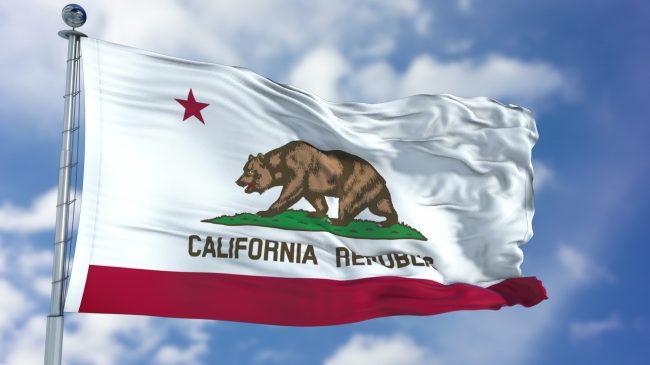
California State Capitol. (Photo: Kevin Sanders for California Globe)
Frequently Asked Questions about Direct Democracy in California
How does someone propose an initiative?
By Chris Micheli, October 24, 2023 2:45 am
For those not familiar, I put together the following questions and answers for those queries that are most often posed regarding the three forms of direct democracy in California:
What is an initiative? The initiative is the power of the state’s voters to propose statutes and amendments to the Constitution.
How does someone propose an initiative? An initiative measure may be proposed by presenting to the Secretary of State a petition that sets forth the text of the proposed statute or amendment to the Constitution and is certified to have been signed by the required number of voters.
What are the signature requirements for an initiative? Voters equal in number to 5% for a statutory initiative, and 8% for a constitutional amendment initiative, of the votes for all candidates for Governor at the last gubernatorial election.
Does an initiative have to appear on the next general election ballot? Generally, yes, unless the Governor calls a special statewide election for the measure.
Can an initiative cover multiple topics? No, an initiative measure embracing more than one subject may not be submitted to the electors or have any effect.
What is a referendum? The referendum is the power of the state’s voters to approve or reject statutes or parts of statutes.
Are all statutes enacted by the Legislature subject to a referendum? No, the following types of bills are not subject to referendum: urgency statutes, statutes calling elections, and statutes providing for tax levies or appropriations for usual current expenses of the State.
When must a referendum be proposed? A referendum measure may be proposed by presenting to the Secretary of State, within 90 days after the enactment date of the statute, a petition certified to have been signed by the required number of voters.
What are the signature requirements for a referendum? Voters equal in number to 5% of the votes for all candidates for Governor at the last gubernatorial election.
Does the referendum apply to the entire statute? A referendum can ask that the statute or part of the statute be submitted to the state’s voters.
Does a referendum have to appear on the next general election ballot? Generally, yes, unless the Governor calls a special statewide election for the measure.
When does an initiative or a referendum take effect? An initiative statute or referendum approved by a majority of votes takes effect on the fifth day after the Secretary of State files the statement of the vote for the election. However, the measure may provide that it becomes operative after its effective date.
What happens if a referendum qualifies for the ballot? The statute is delayed from going into effect until the voters cast their ballot and approve or disapprove of the referendum.
What happens when the provisions of two or more initiative conflict with each other? If provisions of two or more measures approved at the same election conflict, the provisions of the measure receiving the highest number of affirmative votes prevails.
Can the Legislature amend or repeal a voter-approved statute? The Legislature may amend or repeal an initiative statute by another statute that becomes effective only when approved by the voters, unless the initiative statute permits amendment or repeal without the voters’ approval.
What is the role of the Attorney General for an initiative or referendum? Before circulation of an initiative or referendum petition for signatures, a copy must be submitted to the Attorney General who must then prepare a title and summary of the measure.
Is an initiative or referendum allowed at the local level in this state? Yes, initiative and referendum powers may be exercised by the voters of each city or county under procedures that the Legislature provides.
Are there any prohibitions on initiatives? They cannot name any individual to hold any office, or name or identify any private corporation to perform any function or to have any power or duty.
What is a recall? Recall is the power of the voters to remove an elective officer.
How does someone propose a recall? Recall of a state officer is initiated by delivering to the Secretary of State a petition alleging the reason for recall. The recall proponents have 160 days to file signed petitions.
Can the reason for the recall be reviewed? No.
What are the signature requirements for a recall? A petition to recall a statewide officer must be signed by voters equal to 12% of the last vote for the office. Signatures to recall legislators and judges of the courts of appeal and trial courts must be equal to 20% of the last vote for the office.
When must a recall election be called? An election to determine whether to recall an officer and, if appropriate, to elect a successor must be called by the Governor and held not less than 60 days nor more than 80 days from the date of certification of sufficient signatures.
What is the vote requirement for a successful recall? Majority vote is required to remove an officer.
What is the vote requirement for the successor candidate? If there is a candidate, the candidate who receives a plurality is the successor.
Who handles the recall duties if the Governor is subject to a recall? The Lieutenant Governor.
- Frequently Asked Questions about Voting on a Recall Petition - April 29, 2024
- Should Interpretive Guidance Be Included in California Legislation? - April 28, 2024
- Legislative Intent Does Not Equate to a Mandate - April 27, 2024




